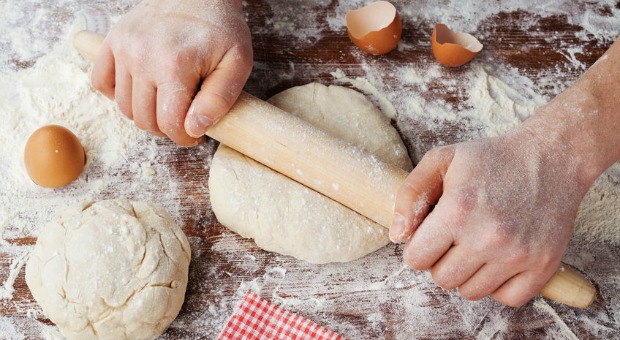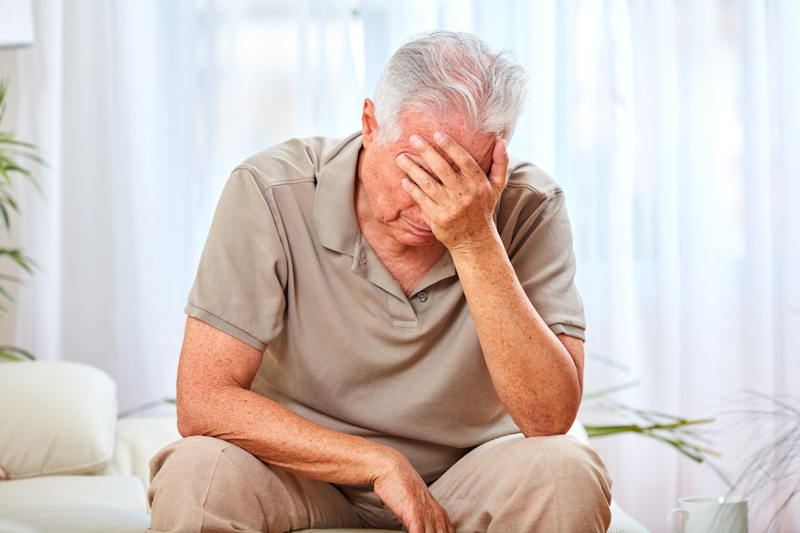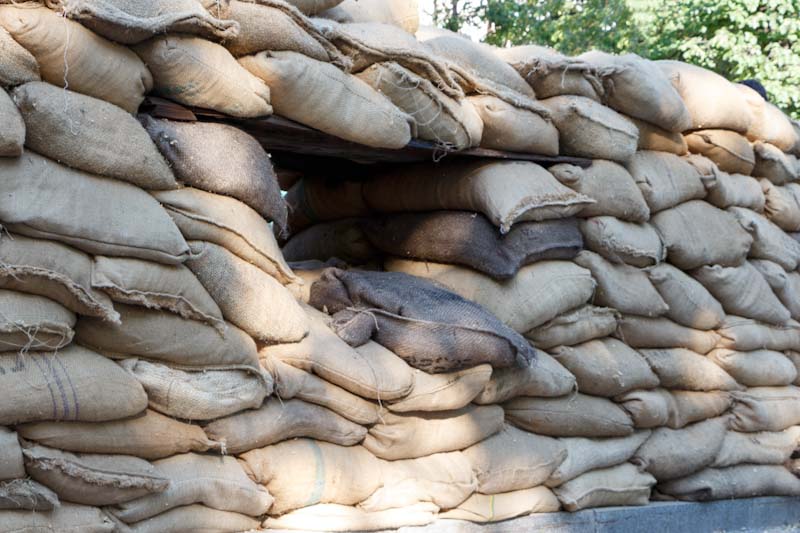Here at SVP, we talk quite a bit about self-sufficiency, but if you’re living in a tiny apartment and making very little money, or even if you’re a CEO at a big company and are stuck living in the city because of your job, it can seem like an impossible task.
The thing is – self-sufficiency is a frame of mind. It’s right there. All you have to do is reach for it. That’s the first step to regaining self-sufficiency.
There are two types of people: those who are happy letting somebody else run the show and those who like to run the show. That’s a bit simplistic, but it’s close enough. If you’re reading this, you’re probably the latter, and you won’t have any problem putting in the effort to make yourself self-sufficient.
We’ve talked about how to become self-sufficient in broad strokes but we’ve never really approached it from the beginning. We’ve never discussed how to change your state of mind from dependent to independent, and that’s really the most important step of all.
Most people have this hugely vague idea of what it means to be self-sufficient. You probably picture the guy on the Alaska show that lives in a hut, kills his own food with a homemade bow and arrow, and camps under boughs of pine trees when he’s stuck away from his hut. Yeah, that’s pretty much extreme self-sufficiency.
Relax – swimming naked across a semi-frozen river in 5 degree weather didn’t even come close to making this list! Settle in, pick a few steps that sound good, and get started. Anything you do will put you closer to being self-sufficient than you are now.
Learn to Grow Food
There’s more than one reason to grow plants. Sure, you’re going to get delicious herbs, fruits, or vegetables out of the process, but that’s not the biggest benefit – knowledge is. That’s going to be a theme throughout this article, because knowledge is what will separate those of us who can from those who can’t. We’ll know what to do and they won’t.
So, start a few plants. You don’t have to go whole-hog right off the bat. If you don’t have much space, grow some herbs and maybe a few container plants, then move up to trying some upside-down plants after you get the hang of that. You’ll learn how to grow your own food and even if you can’t do it on a large scale now, you’ll know how to if you ever need to, and can grow the skill as your situation changes.
Learn how to Save Seeds
After you’ve got your plants growing, learn how to collect and preserve the seeds. After all, they’re there and there’s no need to waste them. It’s important for you to start with heirloom seeds because they’re the only ones that grow true every year. We’ve written about that here.
Saving your seeds now serves two purposes. First, in the short-term and assuming no SHTF scenarios occur, you won’t have to pay for seeds next season. Second, you’ll know the process, which will be critical if a SHTF situation ever arises. And if it happens between now and next year, you have seeds!
Learn to Cook and Eat at Home
Big deal, here. You may be a candidate for the Next Food Network Star, or you may have trouble boiling water, but there’s always more you can learn, especially about using good equipment. I admit to being partial to one piece in particular – a Dutch oven. That’s because I can use it at home to make an amazing roast, or I can take it camping and make biscuits, stew, or seriously just about anything else, baked, stewed, or brewed.
That’s just one suggestion, though. The idea is to get used to cooking your own food, for two main purposes. First and foremost, if you don’t know how to cook, and how to tell if your food is spoiled, you’re never going to be self-sufficient, and if SHTF, you may actually not survive. Starvation or food poisoning will get you.
Second, cooking at home is more nutritious, much less expensive, and super satisfactory, especially if you’re cooking for yourself.
Learn to Preserve Food
You don’t have to have a full-blown garden to make a big batch of spaghetti sauce, salsa, or soup and can what you have left over. As a matter of fact, you’re serving a few purposes by doing that – you’re stockpiling food in case of emergency, you’re learning how to preserve food, and you’re stocking your pantry in case you’re lazy one night and want something homemade but don’t want to invest the time in it.
Learn how to dehydrate, too. After all, who doesn’t love jerky? It’s the perfect snack just because it’s delicious, but also if you want something you can take with you camping, or to have a quick protein boost after a workout or to get you through that afternoon slump.
Learn how to Compost
You can buy small compost buckets that fit right under your kitchen sink, and let me tell you, it’s great for your plants! You don’t have to have a huge pile in a ginormous back yard to do this, and if something happens, you’ll already know how to do it and will be able to transfer the skill to a larger pile.
Stop Wasting
This is huge step toward getting into the self-sufficient state of mind. How much food do you think you throw away in a month? Or how many half-full sodas or juices do you pick up around the house? Stop it. You’re throwing valuable money down the drain. Estimate how much you’re going to use and don’t buy extra, and don’t impulse-buy. Eat before you go to the store so that you aren’t tempted to buy everything that looks good and stick to your list.
Collect Rainwater
This is a simple thing to do and can be done even with a pail on the balcony. Even if you’re only collecting enough to water your plants, it’s getting you in that frugal, thinking-outside-the-box way that will lead to self-sufficiency.
Learn to Make Your Own Cheese, Butter, or Ice Cream
Have you ever had homemade ice cream? If not, you’ve been deprived of a glorious treat. We used to make it when I was a kid. Mom would make it, then the kids would take turns cranking the bucket. And oh-my-goodness was it amazing! You can also make butter in a jar, and you can make several different kinds of cheeses in no time at all. And you’ll have the skill if you need it.
Use a Clothesline
This is probably the easiest step to take toward self-sufficiency. I have to admit that I’m not a fan of line-dried towels, but there’s no reason that you can’t hang your jeans and t-shirts to dry. And you’ll save quite a bit on your electric bill, too. After all, even a few bucks saved is a few bucks, right?
Be Thrifty
This doesn’t mean be cheap, but it does mean to watch your pennies. Check sales catalogues, use coupons if you’d like, and don’t spend money that you don’t have. It’s always good to have a rainy-day fund rather than a huge barrel of debt. Also, fix things instead of throwing them away if you can, and cut off your old jeans for cute shorts this year instead of blowing money you may not have on new ones. There are a million ways to save money; again, it’s all about building the mindset.
Reuse and repurpose everything that you can. Turn that old sweater into a pillow case. Use the cottage cheese tubs as planters. Look at something and imagine what you can turn it into. That’s a self-sufficient way to think.
Get out of Debt, then Avoid It
You’ll never be self-sufficient if you’re in debt to your eyeballs. Develop a plan to get out of debt as much as possible, then live within your means to stay that way.
Make Your own Soap and Hygiene Products
This is a fun project that I’ve written about elsewhere. The upsides to making your own soap, toothpaste, lotions, and deodorant is that you know what’s in your products, you know how to make them if you ever have to, and you aren’t dependent on the store for it.
Learn CPR and First Aid
There are many classes taught, but the Red Cross offers the most common classes. You’ll learn how to carry people, make splints, treat wounds, and perform resuscitation. This is never a bad skill to have, survival or not. Heck, there could be a car wreck or a kid in the neighborhood could wreck his skateboard. You’ll know how to handle the scene.
Overcome Addictions
Nothing says dependent like, well, dependency. Smoking and chewing are the two biggest ones that pop into my head, but there’s a huge opioid crisis in our country right now, too. Kick what habits you can on your own, and get help for the others. If SHTF, or if you ever want to be able to live a completely self-sufficient life, you’re never going to be able to do it if you have an addiction.
Get Healthy
And the final step on the list – get healthy. Eat right, exercise, meditate. A healthy mind and body are required to be self-sufficient. By treating your body well, you’ll be better prepared to survive in an emergency, and you may also be able to get off of many of the medications that you’re currently on, such as blood pressure meds, insulin, or even pain meds. If you lose weight and have strong muscles, many of your problems will go away.
So, what’s the take-away? Self-sufficiency is, first and foremost, a state of mind. Once you learn how to think like somebody used to solving their own problems, you’ll become a person who can solve your own problems. It’s as easy (or as difficult) as that.
If you have any other tips to becoming self-sufficient, please share them with us in the comments section below. Also, check out my book, Forgotten Lessons of Yesterday, to get more information and instructions on many of the skills that we’ve just discussed as well as recipes.
This article has been written by Theresa Crouse for Survivopedia.











Rebecca Galloway | July 9, 2017
|
This was an excellent article! And, thank you for thePDF file.
I’ll be sharing this article with my twenty something year old kids. The article is well laid out, easy to read and may cause a conversation with Mom on ideas on composting or pantry organization. They have found it humorous over the years that Mom is a prepper (small scale).
A month ago we moved from Florida to North Carolina. In the madness of moving my 25 year old daughter helped me pack. I offered to pay her and her boyfriend for the much needed labor they did And take what she needed to help me reduce moving the weight of canned goods, etc. She replied, “Thanks Mom, I just went grocery in your pantry and you saved me over $300. ”
The new tips I’m putting to immediate use are collecting rain water for plant watering. We are now on city water (ugh, chlorinated) and we have to pay for it. My recycle bin is set back up. Previously, I did not know the green/brown ratio. I’m not sure where in the yard to put it. Shade or sun?
Looking forward to seeing more posts like today. Thanks for the continued flow of ideas and information.
Warmly, Rebecca
Bill in Idaho | July 9, 2017
|
Outstanding Article, Theresa ! GOOD STUFF ! Note on Composting: Make SURE that Everyone understands the Reason for Composting – And the Difference between COMPOST and HUMUS ! Real Compost Pile Features: 33% Green (Nitrogen) – and 67% Brown (Carbon); Loose Pile Layered about 4′ X 4′ X 4′; Ample supply of Microbial Animals (Bacteria -12 to 15 varieties); Also, plenty of Innoculating Fungii (I use 7 or 8); Plenty of Earthworms; Misted Twice Daily – always moist – Temp. NEVER Over 85 Deg. F.; Completely shaded – NO Direct SUNLIGHT Allowed; and Mixed Weekly. COMPOST is in the process of De-Composition – HUMUS is Complete Processed – Finished! SAVE Some for your Next Pile – To Get Millions of Live Critters continued. Bill – Master Gardener – 2 Disciplines. Get my 30 page Article for free – just E-Mail me.
Susan Jones | July 9, 2017
|
A keyhole garden is an easy way to use food waste without composting. I read about it as a way to help small farmers in Africa and it works great anywhere. Start with a raised garden bed or just a small hand filled area (like my herb garden). In the center of the garden area dig a hole about 12 inches across and 12 inches deep. Line the hole with chicken wire. Put a little loose dirt into the hole.
When you have coffee grounds, egg shells, leftover salad or raw veggies and fruits put them into the hole, cover with a little more dirt, and stir it up with a hand shovel. The plants in this garden will feed off the scraps, creating organic veggies or herbs with little extra effort.
Johan | January 24, 2021
|
Came across this. I’m on a big self sufficiency drive here in Durban South Africa. My first step was getting a bokashi, which is great for plant nutrients. After that I went fully solar, and have now grown a vegetable garden.
Another great addition, is reusing air-conditioning water for your plants. If you are solar and, like me, live in a humid area, letting the aircon drop into a Jojo tank can give you more than 5 litres a day. Mixing that with the bakoshi liquid does wonders in a vegetable garden.
Once the vegetable are up a d running and stable, I’d be getting a waterfromair from waterfromair.co.za.
This will then run off my solar, creating free drinking water.
Steps from there would be jojo tanks pumped to the toilets and washing machine, with the toilets flushing into a septic tank, which will then empty out through a french drain under the vegetable garden.
tracy jones | July 9, 2017
|
When composting you must NOT compost potatoes or onions.Both WILL ruin your compost.
Shannon | July 10, 2017
|
What about potato peels?
tracy jones | July 9, 2017
|
When composting alternate green and brown layers.